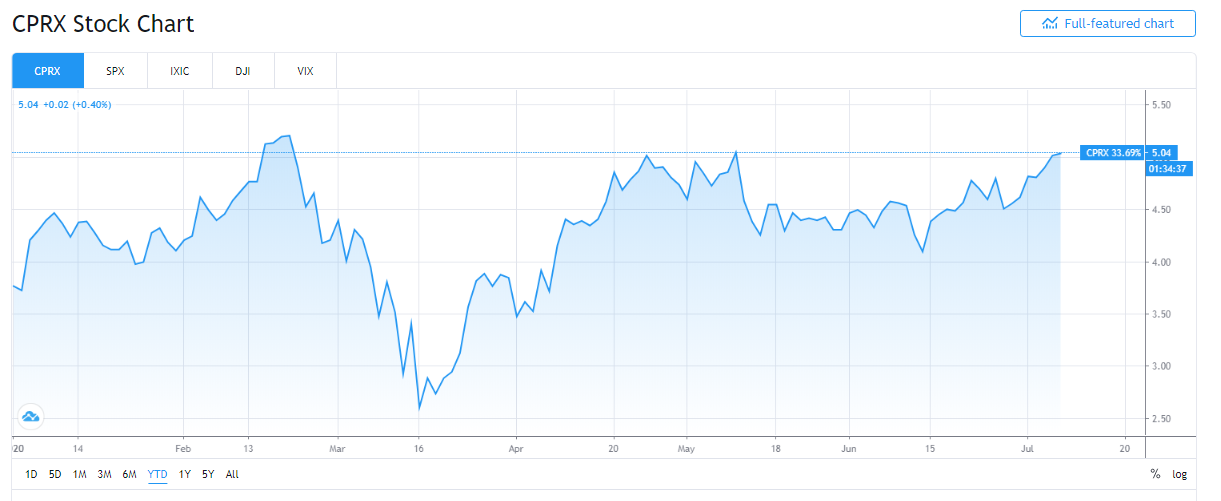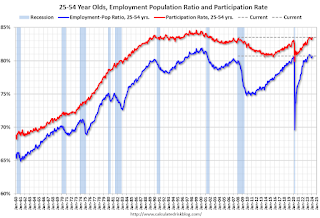3 Popular Robinhood Penny Stocks to Buy Under $5
Popular commission-free trading platform Robinhood is a great way to track investor trends and find popular Robinhood penny stocks to add to your portfolio….

Popular commission-free trading platform Robinhood is a great way to track investor trends and find popular Robinhood penny stocks to add to your portfolio.
Although the platform has come under scrutiny recently because it has attracted a lot of first-time investors to the markets, there’s no denying that there are still some winners among the Robinhood top 100.
In fact, according to a note published by Goldman Sachs Group, the top stocks traded by investors on Robinhood are outperforming the ones being favored by mutual funds and hedge funds since the stock market bottomed out on March 23.
Using data collected from Robinhood and Robintrack, the bank’s Chief US Equity Strategist, David Kostin, put together a list of the most popular stocks traded on Robinhood. The list, which includes airlines, cruise lines, big tech companies, gaming companies, and US banks, was up 61% as of June 11, which is much higher than the 45% returns for similar lists Goldman Sachs compiled of favorite hedge fund and mutual fund holdings.
In short, Robinhood investors seem to know what they are doing, which is why we put together a shortlist of popular Robinhood penny stocks under $5. These stocks are not only popular among users, but analysts are also bullish on these companies.
3 Popular Robinhood Penny Stocks: Catalyst Pharmaceuticals (NASDAQ:CPRX)
At the top of the list of popular Robinhood penny stocks to buy under $5 is Catalyst Pharmaceuticals, a commercial-stage biopharmaceutical company that is focused on developing and commercializing innovative therapies for rare debilitating, chronic neurological and neuromuscular diseases.
In May, Catalyst Pharmaceuticals reported Q1 2020 revenue of $29.1 million, a 134% increase compared to Q1 2019. The company also doubled the size of its field sales force and contracted with a rare-disease experienced inside sales agency to support its commercial efforts in the first quarter.
Although Catalyst was forced to withdraw its 2020 revenue guidance due to COVID-19 disruptions, the company finished the quarter with $101.8 million in cash and investments and no funded debt.
At present, there are 106,861 users on Robinhood that own CPRX stock, but investors aren’t the only ones who are bullish on Catalyst Pharmaceuticals. Four Wall Street analysts have offered CPRX a “BUY” rating, which suggests a potential upside of 89.6%.
A number of hedge funds have also recently bought up the company’s stock, including Armistice Capital, Pura Vida Investments, AQR Capital Management, Marshall Wace LLP, and Mangrove Partners.
By midday Wednesday, CPRX stock was up 0.8% to $5.06, so it has technically pushed past the $5 mark, but it is still a stock worth considering for your portfolio. After all, it’s evident that there are quite a few people who expect it to go much higher in the coming months.
Catalyst Pharmaceuticals has a market cap of $506.7 million, with 103,415,000 shares issued.
3 Popular Robinhood Penny Stocks: Aphria (TSX:APHA) (NASDAQ:APHA)

Next on the list of popular Robinhood penny stocks under $5 that are worth buying is Aphria, a profitable Canadian medical marijuana and cannabis oil company that just began trading on the Nasdaq last month (its US listing was previously on the NYSE).
APHA stock has remained in the Robinhood top 100 most popular stocks for some time now, with 200,294 users owning the stock, and it’s easy to see why. Aphria has reported positive net income in three of the last eight quarters, which is much better than most of its Canadian cannabis peers.
>> 3 Silver Penny Stocks to Consider Adding to Your Portfolio Right Now
In its most recent quarter, Aphria reported net revenue of $144.4 million, an increase of 96% from the previous year’s quarter, and an increase of 20% from the last quarter. The company also reported an adjusted EBITDA from cannabis operations of $6.0 million, an increase of 78% from the prior quarter.
On Wednesday morning, APHA stock was down slightly at $4.26, but analysts expect the price to go much higher in the coming months. Eight Wall Street analysts have issued ratings and 12-month price targets for Aphria, and the overall sentiment is “BUY.” The company has been given a high price target of $10.30 and a low target of $5.30 for an average of $8.21, which suggests a potential upside of 92%.
Aphria has a market cap of $1.17 billion, with 267,587,000 shares issued.
3 Popular Robinhood Penny Stocks: Nokia Corp. (NYSE:NOK)

Last but not least on the list of popular Robinhood penny stocks under $5 is Nokia Corp., a multinational telecommunications, consumer electronics, and information technology company based in Finland.
Although Nokia shares dropped on Wednesday morning following rumors that the company was losing Verizon (NYSE:VZ) as a key client, a Verizon spokesperson has since reiterated the company’s support of Nokia in an interview with Light Reading.
“We are accelerating our 5G deployment and work with a diverse set of partners to deliver a best-in-class network and customer experience,” said a Verizon spokesperson. “We work closely with all vendors in our ecosystem on our future plans. Nokia continues to be an important partner.”
Despite the slight drop, NOK has significantly bounced back from lows experienced in March and is still up roughly 10% since the beginning of 2020.
Several Wall Street analysts see NOK stock going higher in the coming months, including Deutsche Bank, Cannacord Genuity, Northland Securities, Raymond James, MKM Partners, and DZ Bank. The average 12-month price target for the company is $4.60, which suggests an upside of 10.57% from its current share price.
Nokia Corp. has a market cap of $24.36 billion, with 5,653,886,000 shares issued.
Takeaway
If you are looking for some new exciting stocks to add to your portfolio, Robinhood is a great place to look. Of course, it’s important to do your own research to ensure you are making the right investments and allocating your capital to the right places.
Another great way to gauge how well a stock might do is to look at its financials, management team, and analyst ratings. The aforementioned Robinhood penny stocks are only a handful of promising penny stocks out there—there are also a ton of winners to be found in the gold, silver, technology, and cannabis industries, as well.
Are there any hot penny stocks on your radar right now? We would love to hear about them in the comments!
Featured Image: DepositPhotos © SergeyP
nasdaq tsx stocks covid-19 penny stocks gold oilInternational
United Airlines adds new flights to faraway destinations
The airline said that it has been working hard to "find hidden gem destinations."

Since countries started opening up after the pandemic in 2021 and 2022, airlines have been seeing demand soar not just for major global cities and popular routes but also for farther-away destinations.
Numerous reports, including a recent TripAdvisor survey of trending destinations, showed that there has been a rise in U.S. traveler interest in Asian countries such as Japan, South Korea and Vietnam as well as growing tourism traction in off-the-beaten-path European countries such as Slovenia, Estonia and Montenegro.
Related: 'No more flying for you': Travel agency sounds alarm over risk of 'carbon passports'
As a result, airlines have been looking at their networks to include more faraway destinations as well as smaller cities that are growing increasingly popular with tourists and may not be served by their competitors.
Shutterstock
United brings back more routes, says it is committed to 'finding hidden gems'
This week, United Airlines (UAL) announced that it will be launching a new route from Newark Liberty International Airport (EWR) to Morocco's Marrakesh. While it is only the country's fourth-largest city, Marrakesh is a particularly popular place for tourists to seek out the sights and experiences that many associate with the country — colorful souks, gardens with ornate architecture and mosques from the Moorish period.
More Travel:
- A new travel term is taking over the internet (and reaching airlines and hotels)
- The 10 best airline stocks to buy now
- Airlines see a new kind of traveler at the front of the plane
"We have consistently been ahead of the curve in finding hidden gem destinations for our customers to explore and remain committed to providing the most unique slate of travel options for their adventures abroad," United's SVP of Global Network Planning Patrick Quayle, said in a press statement.
The new route will launch on Oct. 24 and take place three times a week on a Boeing 767-300ER (BA) plane that is equipped with 46 Polaris business class and 22 Premium Plus seats. The plane choice was a way to reach a luxury customer customer looking to start their holiday in Marrakesh in the plane.
Along with the new Morocco route, United is also launching a flight between Houston (IAH) and Colombia's Medellín on Oct. 27 as well as a route between Tokyo and Cebu in the Philippines on July 31 — the latter is known as a "fifth freedom" flight in which the airline flies to the larger hub from the mainland U.S. and then goes on to smaller Asian city popular with tourists after some travelers get off (and others get on) in Tokyo.
United's network expansion includes new 'fifth freedom' flight
In the fall of 2023, United became the first U.S. airline to fly to the Philippines with a new Manila-San Francisco flight. It has expanded its service to Asia from different U.S. cities earlier last year. Cebu has been on its radar amid growing tourist interest in the region known for marine parks, rainforests and Spanish-style architecture.
With the summer coming up, United also announced that it plans to run its current flights to Hong Kong, Seoul, and Portugal's Porto more frequently at different points of the week and reach four weekly flights between Los Angeles and Shanghai by August 29.
"This is your normal, exciting network planning team back in action," Quayle told travel website The Points Guy of the airline's plans for the new routes.
stocks pandemic south korea japan hong kong europeanInternational
Walmart launches clever answer to Target’s new membership program
The retail superstore is adding a new feature to its Walmart+ plan — and customers will be happy.

It's just been a few days since Target (TGT) launched its new Target Circle 360 paid membership plan.
The plan offers free and fast shipping on many products to customers, initially for $49 a year and then $99 after the initial promotional signup period. It promises to be a success, since many Target customers are loyal to the brand and will go out of their way to shop at one instead of at its two larger peers, Walmart and Amazon.
Related: Walmart makes a major price cut that will delight customers
And stop us if this sounds familiar: Target will rely on its more than 2,000 stores to act as fulfillment hubs.
This model is a proven winner; Walmart also uses its more than 4,600 stores as fulfillment and shipping locations to get orders to customers as soon as possible.
Sometimes, this means shipping goods from the nearest warehouse. But if a desired product is in-store and closer to a customer, it reduces miles on the road and delivery time. It's a kind of logistical magic that makes any efficiency lover's (or retail nerd's) heart go pitter patter.
Walmart rolls out answer to Target's new membership tier
Walmart has certainly had more time than Target to develop and work out the kinks in Walmart+. It first launched the paid membership in 2020 during the height of the pandemic, when many shoppers sheltered at home but still required many staples they might ordinarily pick up at a Walmart, like cleaning supplies, personal-care products, pantry goods and, of course, toilet paper.
It also undercut Amazon (AMZN) Prime, which costs customers $139 a year for free and fast shipping (plus several other benefits including access to its streaming service, Amazon Prime Video).
Walmart+ costs $98 a year, which also gets you free and speedy delivery, plus access to a Paramount+ streaming subscription, fuel savings, and more.
If that's not enough to tempt you, however, Walmart+ just added a new benefit to its membership program, ostensibly to compete directly with something Target now has: ultrafast delivery.
Target Circle 360 particularly attracts customers with free same-day delivery for select orders over $35 and as little as one-hour delivery on select items. Target executes this through its Shipt subsidiary.
We've seen this lightning-fast delivery speed only in snippets from Amazon, the king of delivery efficiency. Who better to take on Target, though, than Walmart, which is using a similar store-as-fulfillment-center model?
"Walmart is stepping up to save our customers even more time with our latest delivery offering: Express On-Demand Early Morning Delivery," Walmart said in a statement, just a day after Target Circle 360 launched. "Starting at 6 a.m., earlier than ever before, customers can enjoy the convenience of On-Demand delivery."
Walmart (WMT) clearly sees consumers' desire for near-instant delivery, which obviously saves time and trips to the store. Rather than waiting a day for your order to show up, it might be on your doorstep when you wake up.
Consumers also tend to spend more money when they shop online, and they remain stickier as paying annual members. So, to a growing number of retail giants, almost instant gratification like this seems like something worth striving for.
Related: Veteran fund manager picks favorite stocks for 2024
stocks pandemic mexicoUncategorized
Comments on February Employment Report
The headline jobs number in the February employment report was above expectations; however, December and January payrolls were revised down by 167,000 combined. The participation rate was unchanged, the employment population ratio decreased, and the …

Prime (25 to 54 Years Old) Participation
Since the overall participation rate is impacted by both cyclical (recession) and demographic (aging population, younger people staying in school) reasons, here is the employment-population ratio for the key working age group: 25 to 54 years old.
The 25 to 54 years old participation rate increased in February to 83.5% from 83.3% in January, and the 25 to 54 employment population ratio increased to 80.7% from 80.6% the previous month.
Average Hourly Wages
 The graph shows the nominal year-over-year change in "Average Hourly Earnings" for all private employees from the Current Employment Statistics (CES).
The graph shows the nominal year-over-year change in "Average Hourly Earnings" for all private employees from the Current Employment Statistics (CES). Wage growth has trended down after peaking at 5.9% YoY in March 2022 and was at 4.3% YoY in February.
Part Time for Economic Reasons
 From the BLS report:
From the BLS report:"The number of people employed part time for economic reasons, at 4.4 million, changed little in February. These individuals, who would have preferred full-time employment, were working part time because their hours had been reduced or they were unable to find full-time jobs."The number of persons working part time for economic reasons decreased in February to 4.36 million from 4.42 million in February. This is slightly above pre-pandemic levels.
These workers are included in the alternate measure of labor underutilization (U-6) that increased to 7.3% from 7.2% in the previous month. This is down from the record high in April 2020 of 23.0% and up from the lowest level on record (seasonally adjusted) in December 2022 (6.5%). (This series started in 1994). This measure is above the 7.0% level in February 2020 (pre-pandemic).
Unemployed over 26 Weeks
 This graph shows the number of workers unemployed for 27 weeks or more.
This graph shows the number of workers unemployed for 27 weeks or more. According to the BLS, there are 1.203 million workers who have been unemployed for more than 26 weeks and still want a job, down from 1.277 million the previous month.
This is close to pre-pandemic levels.
Job Streak
| Headline Jobs, Top 10 Streaks | ||
|---|---|---|
| Year Ended | Streak, Months | |
| 1 | 2019 | 100 |
| 2 | 1990 | 48 |
| 3 | 2007 | 46 |
| 4 | 1979 | 45 |
| 5 | 20241 | 38 |
| 6 tie | 1943 | 33 |
| 6 tie | 1986 | 33 |
| 6 tie | 2000 | 33 |
| 9 | 1967 | 29 |
| 10 | 1995 | 25 |
| 1Currrent Streak | ||
Summary:
The headline monthly jobs number was above consensus expectations; however, December and January payrolls were revised down by 167,000 combined. The participation rate was unchanged, the employment population ratio decreased, and the unemployment rate was increased to 3.9%. Another solid report.
-

 Uncategorized2 weeks ago
Uncategorized2 weeks agoAll Of The Elements Are In Place For An Economic Crisis Of Staggering Proportions
-

 Uncategorized1 month ago
Uncategorized1 month agoCathie Wood sells a major tech stock (again)
-

 Uncategorized3 weeks ago
Uncategorized3 weeks agoCalifornia Counties Could Be Forced To Pay $300 Million To Cover COVID-Era Program
-

 Uncategorized2 weeks ago
Uncategorized2 weeks agoApparel Retailer Express Moving Toward Bankruptcy
-

 Uncategorized3 weeks ago
Uncategorized3 weeks agoIndustrial Production Decreased 0.1% in January
-

 International1 month ago
International1 month agoWar Delirium
-

 International1 hour ago
International1 hour agoWalmart launches clever answer to Target’s new membership program
-

 Uncategorized3 weeks ago
Uncategorized3 weeks agoRFK Jr: The Wuhan Cover-Up & The Rise Of The Biowarfare-Industrial Complex



















